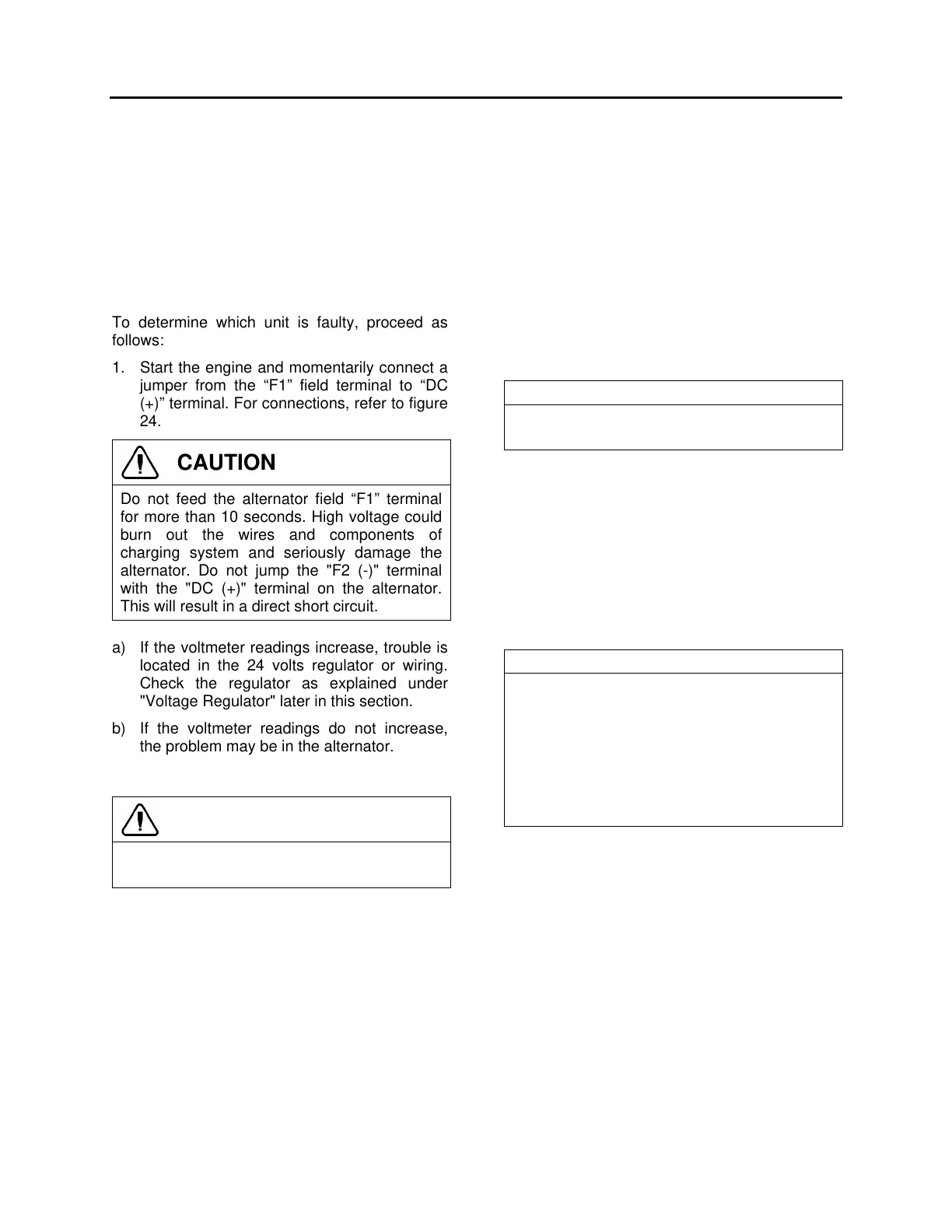Section 6: ELECTRICAL
PA1553
39
7. CHARGING SYSTEM
TROUBLESHOOTING
The troubleshooting of the charging system is
made easier by the use of a 12 and a 24 volt
voltmeter, “BAT” and “ALT” telltale lights
mounted in the dashboard (for location refer to
the “Owner’s Manual”).
7.1 ALTERNATOR OR VOLTAGE
REGULATOR
To determine which unit is faulty, proceed as
follows:
1. Start the engine and momentarily connect a
jumper from the “F1” field terminal to “DC
(+)” terminal. For connections, refer to figure
24.
CAUTION
Do not feed the alternator field “F1” terminal
for more than 10 seconds. High voltage could
burn out the wires and components of
charging system and seriously damage the
alternator. Do not jump the "F2 (-)" terminal
with the "DC (+)" terminal on the alternator.
This will result in a direct short circuit.
a) If the voltmeter readings increase, trouble is
located in the 24 volts regulator or wiring.
Check the regulator as explained under
"Voltage Regulator" later in this section.
b) If the voltmeter readings do not increase,
the problem may be in the alternator.
7.2 ALTERNATOR DIAGNOSIS
CAUTION
Before checking the alternator, set the ignition
key switch to the OFF position.
It is not necessary to disassemble completely
the alternator to make electrical checks. All
electrical checks are made at the diode end of
the assembly without having to remove the rotor,
drive end frame or bearing. If the electrical
components are not defective but bearing
replacement is necessary, this can be done at
the drive end without having to disassemble the
diode end of the unit.
The components in the alternator that require
electrical checks are the field winding, the six
diodes, and the stator winding.
7.2.1 Diode Checks
Each diode may be checked for shorts and
opens as follows:
1. Ensure the ignition key switch is set to the
“OFF” position.
2. Remove the pipe plug from underneath the
end housing to drain the oil in the rectifier
engine oil supply.
3. Remove the cap screws (7) and lock
washers that attach the diode end cover to
the end housing. Remove the end cover
from the end housing.
NOTE
Do not operate the alternator unless this unit
is completely reassembled.
4. Remove seal from the end housing, detach
and remove “DC” and relay terminals, stud,
insulating sleeves and O-rings.
5. Disconnect all diode flexible leads; i.e. three
from the output terminal stud and three from
the diode supports. See figure 25 for more
details.
Each diode may be checked for short or open
circuits with an ohmmeter.
NOTE
The ohmmeter polarity may be determined by
connecting its leads to the voltmeter leads.
The voltmeter will read up-scale when the
negative leads are connected together and the
positive leads are connected together. The
polarity of the voltmeter leads may be
determined by connecting the leads to the
identified terminals on a battery.

